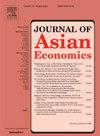Environmental constraint and house price: Evidence from China
IF 3.4
3区 经济学
Q1 ECONOMICS
引用次数: 0
Abstract
With the increasingly serious environmental pollution problem, how to effectively curb environmental pollution and reduce corporate emissions has become an important issue that urgently needs to be addressed. A large number of studies evaluating environmental protection policies have overlooked the additional social costs incurred during the environmental governance. Therefore, we systematically analyze the impact of environmental regulation on real estate prices, taking the pilot policy of Sulfur Dioxide Emissions Trading (SDET) in China as an opportunity. The results show that the SDET has led to a significant increase in house prices in the pilot cities, and the magnitude of the increase expands with the increase in the number of participating enterprises and the turnover of emissions trading. The mechanistic tests show that the emissions trading pilot policy has produced a population agglomeration effect while achieving environmental benefits, improved residents' willingness to pay for local housing, and promoted house prices by increasing housing demand. The research conclusions of this paper provide a decision-making reference for the government to consider the environmental effects and social effects as a whole when formulating environmental policies.
环境约束与房价:来自中国的证据
随着环境污染问题的日益严重,如何有效遏制环境污染,减少企业排放已成为迫切需要解决的重要问题。大量评价环境保护政策的研究忽略了环境治理过程中产生的额外社会成本。因此,本文以中国二氧化硫排放权交易(SDET)试点政策为契机,系统分析了环境调控对房地产价格的影响。结果表明,SDET导致试点城市房价出现明显上涨,且涨幅幅度随着参与企业数量和排放交易交易额的增加而扩大。机制检验表明,排污权交易试点政策在取得环境效益的同时,产生了人口集聚效应,提高了居民在当地购买住房的意愿,通过增加住房需求,促进了房价的上涨。本文的研究结论为政府在制定环境政策时综合考虑环境效应和社会效应提供了决策参考。
本文章由计算机程序翻译,如有差异,请以英文原文为准。
求助全文
约1分钟内获得全文
求助全文
来源期刊

Journal of Asian Economics
ECONOMICS-
CiteScore
4.70
自引率
9.40%
发文量
90
期刊介绍:
The Journal of Asian Economics provides a forum for publication of increasingly growing research in Asian economic studies and a unique forum for continental Asian economic studies with focus on (i) special studies in adaptive innovation paradigms in Asian economic regimes, (ii) studies relative to unique dimensions of Asian economic development paradigm, as they are investigated by researchers, (iii) comparative studies of development paradigms in other developing continents, Latin America and Africa, (iv) the emerging new pattern of comparative advantages between Asian countries and the United States and North America.
 求助内容:
求助内容: 应助结果提醒方式:
应助结果提醒方式:


